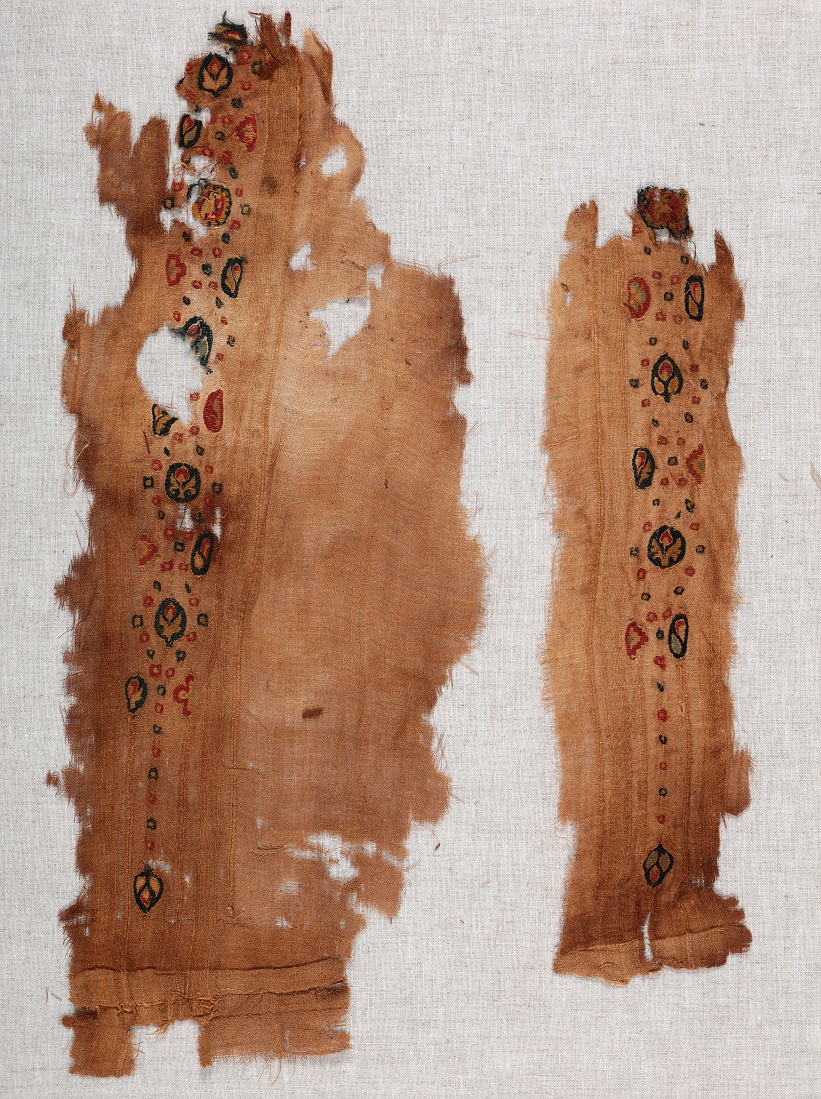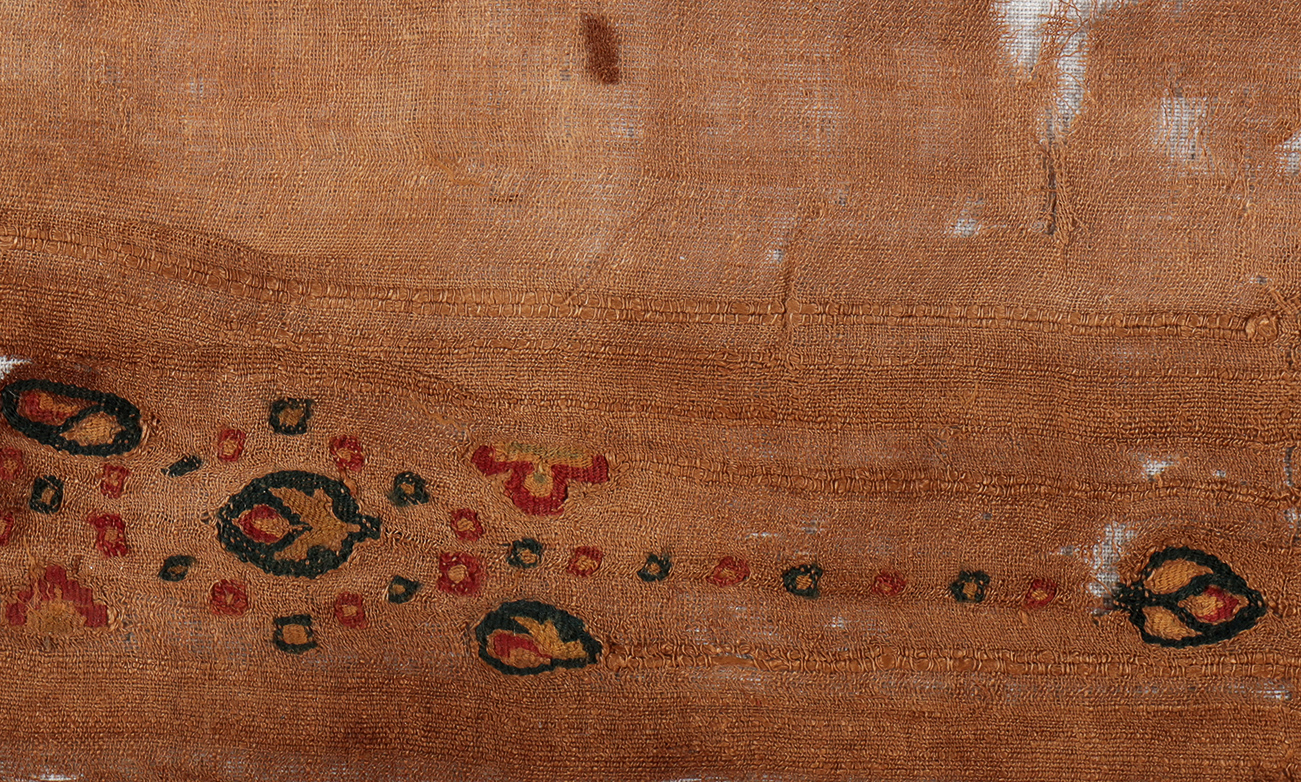Fine linen bands decorated with multi-coloured flowers and crenelated motifs in lozenges and half-lozenges formed by loops. So-called self-stripes edge the decoration.
Origin:
Egypt
Date:
5th - 7th century
Material:
Linen and wool
Dimensions:
1) warp: 18 cm, weft: 40 cm;
2) warp: 8 cm, weft: 33 cm; tuck: 2cm
Comparisons:
Cf. FT 167, FT 170.
Musée des Tissus, Lyon inv. 34091.4.
Martin van Wagner Museum, inv. H 2215.
Provenance:
Collection Coptic textiles Fill-Trevisiol: donation
Location:
Musée royal de Mariemont
Tapestry motifs inwoven in linen cloth
I. Ground weave
Warp:
natural-coloured linen S: 25/cm
Weft:
natural-coloured linen S: 16/cm
Weave:
warp-faced tabby
Other features:
self-bands to mark the clavi, 2 self-bands become weft; 4-5 countered twining with 2 cords (probably to strengthen the neck opening corners)
II. Tapestry areas
Warp:
natural-coloured linen S
Weft:
red, green, blue and yellow wool Z: 92/cm; natural-coloured linen S: details
Weave:
extended tabby 2/2
Ribs per cm:
12
Special techniques:
slit tapestry, eccentric weft
Dyes analysed:
weft thread: red Z wool: kermes

